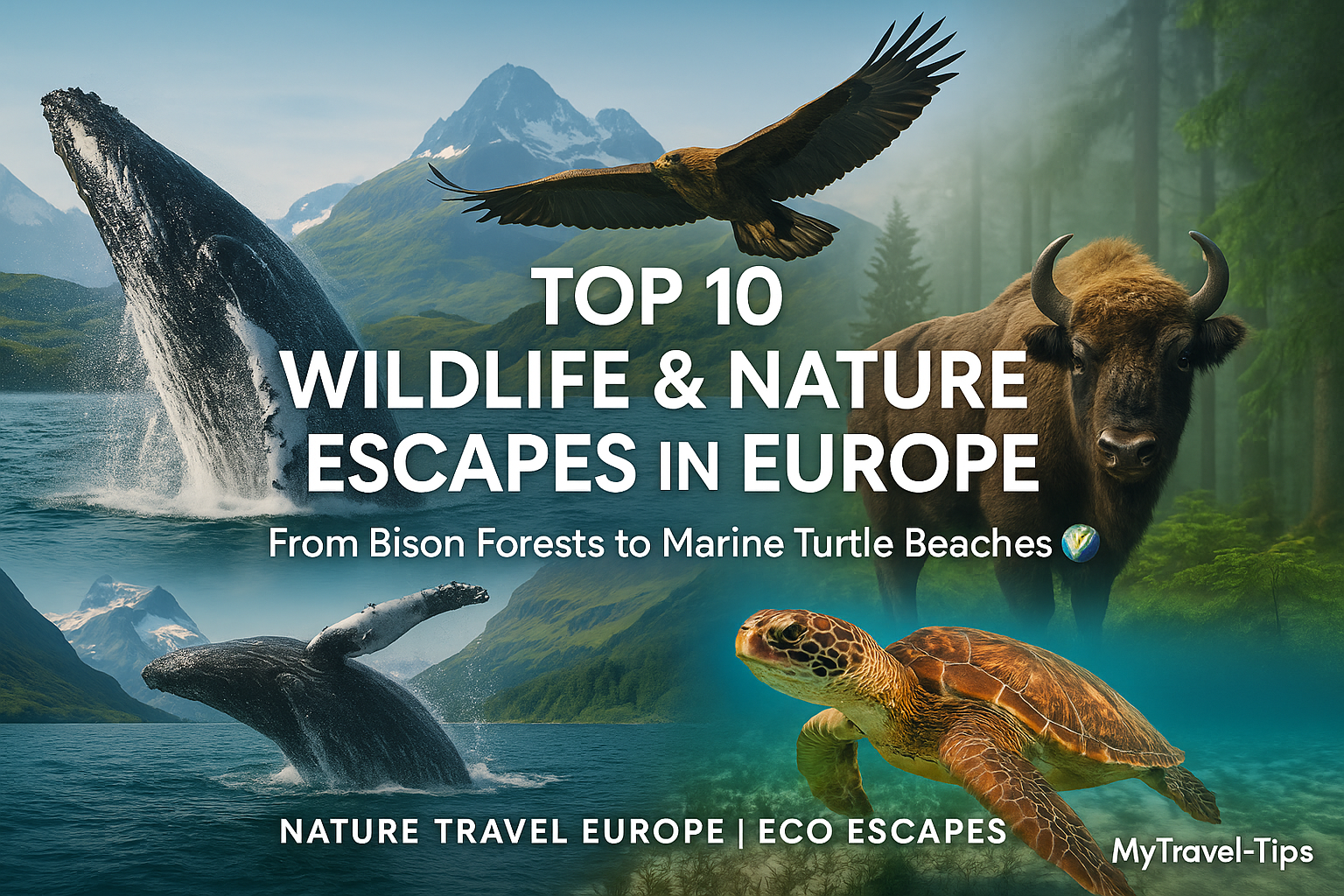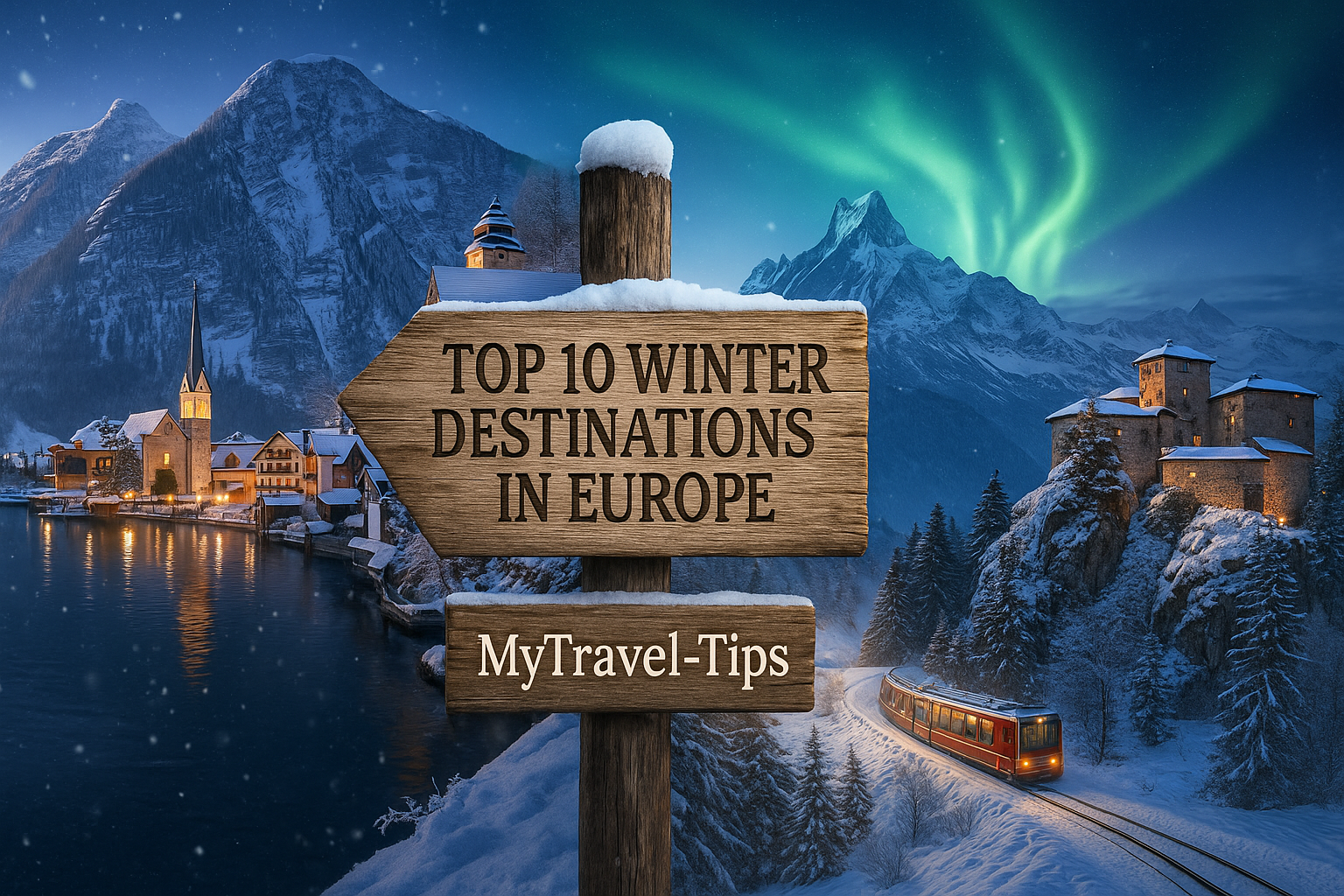Top 10 Most Beautiful Beaches of Europe for best Seaside Escape

Top 10 Most Beautiful Beaches of Europe
Europe is home to some of the world's most stunning coastlines, ranging from the turquoise coves of the Mediterranean to wild Atlantic shores. Whether you're dreaming of white sand beaches, dramatic cliffs, or hidden pebble bays, the continent offers a beach experience for every kind of traveler. These destinations aren’t just about sunbathing—they blend natural beauty with vibrant culture, charming towns, and unforgettable seascapes.
In this guide, we’ve curated the top 10 most beautiful beaches across Europe that deserve a spot on your bucket list. From Greece’s iconic shores to Portugal’s rugged coastlines and beyond, each beach has been selected for its unique charm, accessibility, and photogenic appeal—perfect for both tranquil escapes and adventure seekers.
🌊 Key Insight: The best European beaches often combine scenic beauty with nearby villages, local food, and cultural gems—plan your visit with both relaxation and exploration in mind.
1. Navagio Beach, Greece
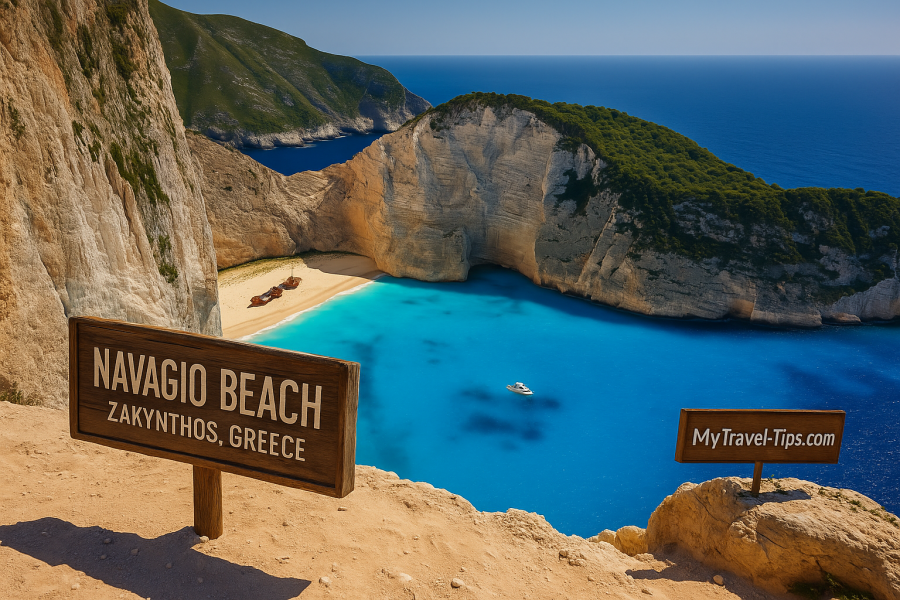
Zakynthos, Ionian Islands, Greece
Only by boat (20–30 min ride)
May–June & September (avoid July–August crowds)
Clifftop trail near Anafonitria village
Located on the striking Ionian Island of Zakynthos, Navagio Beach—or Shipwreck Beach—is a visual marvel famous for its white sands, towering limestone cliffs, and crystal-clear blue waters. The rusted remains of a smuggler’s ship give the beach its name and distinctive look, making it one of the most photographed coastal spots in the world. The beach is tucked between steep rock faces, creating a hidden cove that feels both secluded and cinematic.
Reaching Navagio requires a boat ride from nearby harbors like Porto Vromi or Agios Nikolaos, offering scenic views of the coastline along the way. Once there, you'll be met with soft sands and inviting water perfect for swimming. For panoramic views, head to the clifftop viewpoint above Navagio Bay—a must-visit for photographers and nature lovers alike. Morning trips offer better light and fewer crowds.
- Ideal For: Photography, scenic views, swimming
- Recommended Gear: Water shoes, dry bag, camera, sunscreen
- Nearby Highlights: Blue Caves, Porto Limnionas, Zakynthos Town
- Local Tip: Book a morning boat tour to catch calmer seas and softer lighting
🌅 Key Insight: The beach’s beauty from the ground is undeniable, but the true magic is captured from the clifftop. Make time for both angles to appreciate Navagio's full allure.
2. Praia da Marinha, Portugal
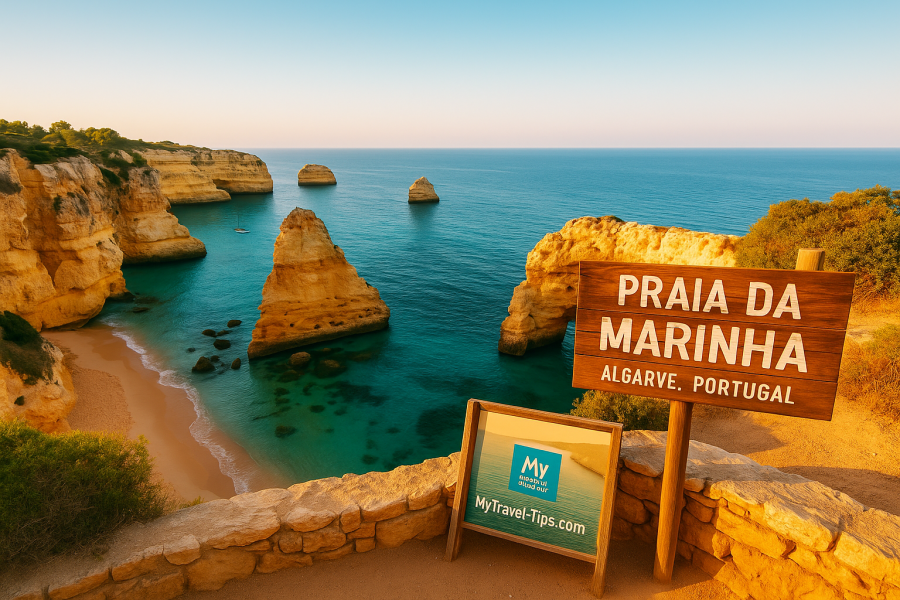
Algarve, Southern Portugal
Staircase from coastal trail or parking area
Late spring (May–June) and early autumn (Sept–Oct)
Top of the cliffs along the Seven Hanging Valleys Trail
Consistently ranked among the world’s most beautiful beaches, Praia da Marinha in Portugal’s Algarve region stuns with its golden cliffs, sea-carved arches, and clear blue waters. Unlike many commercial beaches, this gem remains relatively undeveloped, allowing visitors to appreciate its raw natural beauty. A steep set of stairs leads you down to the beach, where you’ll find dramatic rock formations, natural sea pools, and excellent spots for snorkeling.
For a bird’s-eye view of the beach’s dramatic coastline, head to the top of the cliffs where the Seven Hanging Valleys Trail begins. This area is perfect for sunset walks and drone photography. While there are no major resorts crowding the area, the beach is easily accessible by car and offers a quiet, authentic atmosphere that’s ideal for nature-focused travelers. It's especially magical in the shoulder season when the lighting is warm and the crowds are thin.
- Ideal For: Nature lovers, landscape photography, snorkeling
- Recommended Gear: Snorkel kit, hiking shoes, sun hat, camera
- Nearby Highlights: Benagil Cave, Carvoeiro, Seven Hanging Valleys Trail
- Local Tip: Visit during low tide for access to hidden rock pools and arches
🌊 Key Insight: Praia da Marinha is not just a beach—it's a natural gallery of arches, grottos, and cliffs sculpted by the Atlantic. Combine beach time with a short cliffside hike for the best of land and sea views.
3. Cala Goloritzé, Sardinia, Italy
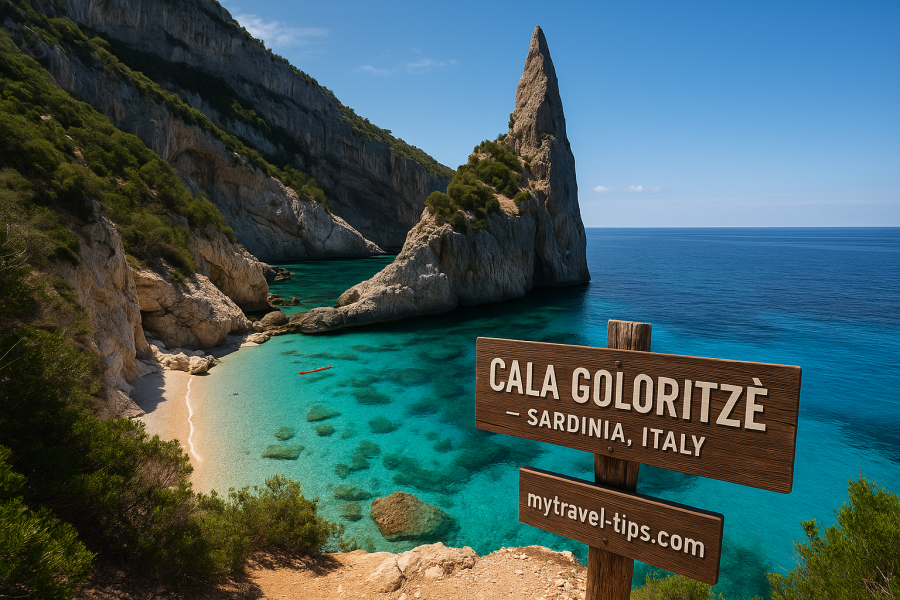
Baunei Coast, Sardinia, Italy
1.5–2 hour hike from Su Porteddu trailhead (or boat from Cala Gonone)
May to early July, or September
Pinnacle rock spire & limestone cliffs
Tucked away on Sardinia’s remote Baunei coastline, Cala Goloritzé is a hidden paradise that’s worth every step of the trek to reach it. This UNESCO-protected cove is known for its dramatic natural arch, towering limestone pinnacle, and vibrant turquoise waters. Unlike crowded resort beaches, Goloritzé offers a raw, peaceful escape surrounded by wild Mediterranean nature. The hike down from the Su Porteddu trailhead winds through aromatic scrub, shady patches, and rocky descents before revealing one of Italy’s most pristine beaches.
While boat access is possible, it’s limited to preserve the marine environment—making the hiking route a popular and rewarding option. The beach itself is small and pebbled, with shallow clear water perfect for snorkeling and floating. You won’t find beach bars or vendors here—just untouched nature and the sound of waves hitting ancient rocks. It’s a must for hikers, photographers, and travelers looking for Italy’s wild side.
- Ideal For: Hikers, snorkelers, off-the-beaten-path travelers
- Recommended Gear: Good hiking shoes, plenty of water, snorkel gear, dry bag
- Nearby Highlights: Cala Mariolu, Pedra Longa, Golgo Plateau
- Local Tip: Start your hike early morning to avoid midday heat and carry cash for the access permit
🌿 Key Insight: Cala Goloritzé is one of Europe’s rare beaches where the journey is as memorable as the destination. It's a spiritual retreat for those willing to trade convenience for beauty.
4. Reynisfjara Beach, Iceland
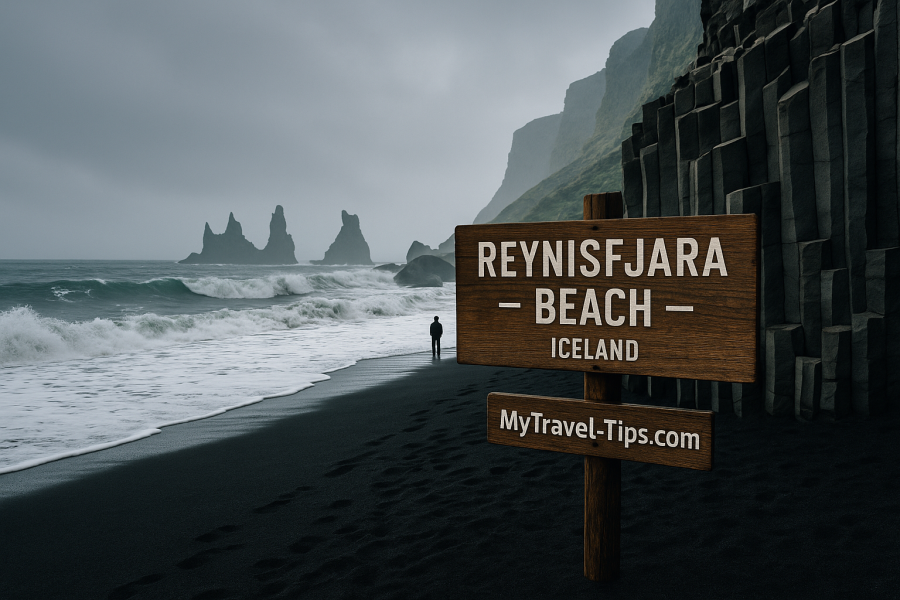
South Coast, near Vík í Mýrdal, Iceland
Accessible by car or tour bus (2.5 hrs from Reykjavík)
May–September for milder weather
Volcanic black sand, basalt columns, roaring waves
Reynisfjara Beach on Iceland’s South Coast is unlike any other beach in Europe—or the world. With its jet-black volcanic sand, towering basalt columns, and powerful Atlantic waves, it feels more like a set from a fantasy film than a coastal getaway. Just a few kilometers from the town of Vík, the beach is backed by dramatic cliffs and faces the Reynisdrangar sea stacks—mythical rock formations said to be trolls turned to stone.
This beach is a photographer’s dream, especially under moody skies or during golden hour. But it’s also a place for caution: the waves are notorious for their strength and “sneaker waves” are known to surge without warning. There’s no swimming here, but walking along the shore, admiring the columnar basalt, and feeling the sheer power of nature make it a humbling and unforgettable experience. Ideal for road-trippers, nature lovers, and anyone with a love for the wild.
- Ideal For: Nature photography, dramatic scenery, geology buffs
- Recommended Gear: Windbreaker, tripod, hiking shoes, telephoto lens
- Nearby Highlights: Dyrhólaey, Vík church, Skógafoss & Seljalandsfoss waterfalls
- Local Tip: Stay behind the warning signs on the beach and check tide charts before visiting
🌌 Key Insight: Reynisfjara isn’t about swimming or sunbathing—it’s about standing in awe of nature’s raw beauty. For ultimate impact, visit during golden hour or under a dramatic sky.
5. Plage de Palombaggia, Corsica, France
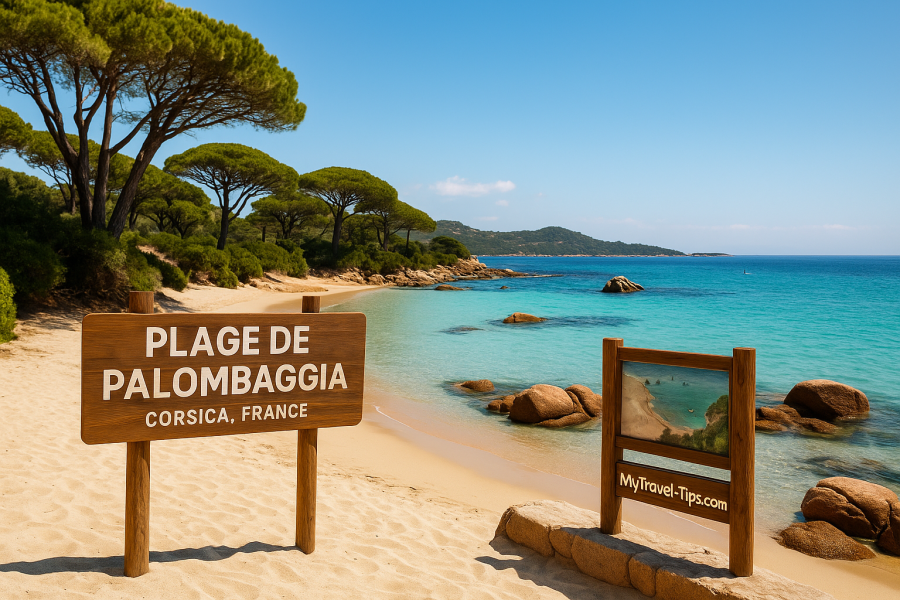
South Corsica, near Porto-Vecchio, France
15-minute drive from Porto-Vecchio, parking available
June or September (warm weather, fewer crowds)
Fine white sand, turquoise shallows, pine forest backdrop
Plage de Palombaggia is Corsica’s most famous beach—and for good reason. With its powdery white sand, shallow turquoise waters, and shady umbrella pines swaying behind the shore, it offers the picture-perfect Mediterranean escape. Located just south of Porto-Vecchio, this beach is ideal for families, couples, and solo travelers looking to soak up the sun in an uncrowded natural setting.
Despite its popularity, Palombaggia remains charmingly undeveloped. There are a few beach cafés and loungers available, but much of the area retains its wild appeal. The warm, calm waters make it safe for children and ideal for paddleboarding or snorkeling. It's also a great place to explore local Corsican food at beachfront tavernas or enjoy a peaceful sunset walk along the soft sands.
- Ideal For: Relaxation, families, swimming, beach walks
- Recommended Gear: Sun hat, reef-friendly sunscreen, paddleboard, beach blanket
- Nearby Highlights: Santa Giulia Beach, Bonifacio cliffs, Porto-Vecchio Old Town
- Local Tip: Arrive before 10 AM for easy parking and to claim a shaded spot under the pines
🌞 Key Insight: Palombaggia combines the clear waters of the Caribbean with the rustic soul of Corsica—making it one of Europe’s most versatile and naturally beautiful beaches.
6. Zlatni Rat (Golden Horn), Croatia
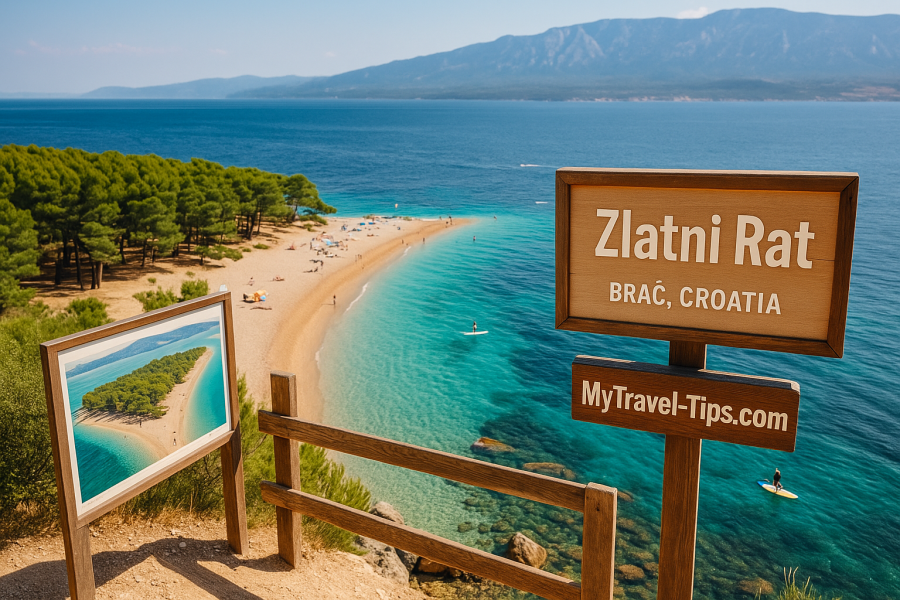
Island of Brač, near Bol, Croatia
Ferry from Split + short drive or walk from Bol town
June–September for warm sea and beach activities
Pebble beach with a unique shape and wind conditions
Zlatni Rat, often called the “Golden Horn” or “Golden Cape,” is a natural phenomenon located on Croatia’s Brač Island. This V-shaped stretch of fine white pebbles juts dramatically into the Adriatic Sea and subtly shifts its shape with the tides, currents, and winds. It's not only a visual wonder but also a hotspot for windsurfing and water sports due to the unique meeting of wind and sea at its tip.
Easily accessible from the charming town of Bol, Zlatni Rat is backed by a forest of pine trees and walking trails. The water here is remarkably clear, making it ideal for swimming and paddleboarding. While the beach itself is pebbly, it’s surprisingly comfortable and well-equipped with sunbeds, water sports rentals, and food kiosks during peak season. The beach’s natural symmetry is best appreciated from a drone or nearby hiking paths.
- Ideal For: Windsurfing, swimming, paddleboarding, aerial photography
- Recommended Gear: Water shoes, GoPro, windbreaker (for afternoon breezes)
- Nearby Highlights: Bol Town, Vidova Gora viewpoint, Dominican Monastery
- Local Tip: Mornings are calmer and better for swimming, while afternoons attract surfers and kiteboarders
🏄 Key Insight: Zlatni Rat’s shape is constantly changing with nature—making every visit slightly unique. For a jaw-dropping view, hike to the Vidova Gora summit above Bol.
7. Elafonissi Beach, Crete, Greece
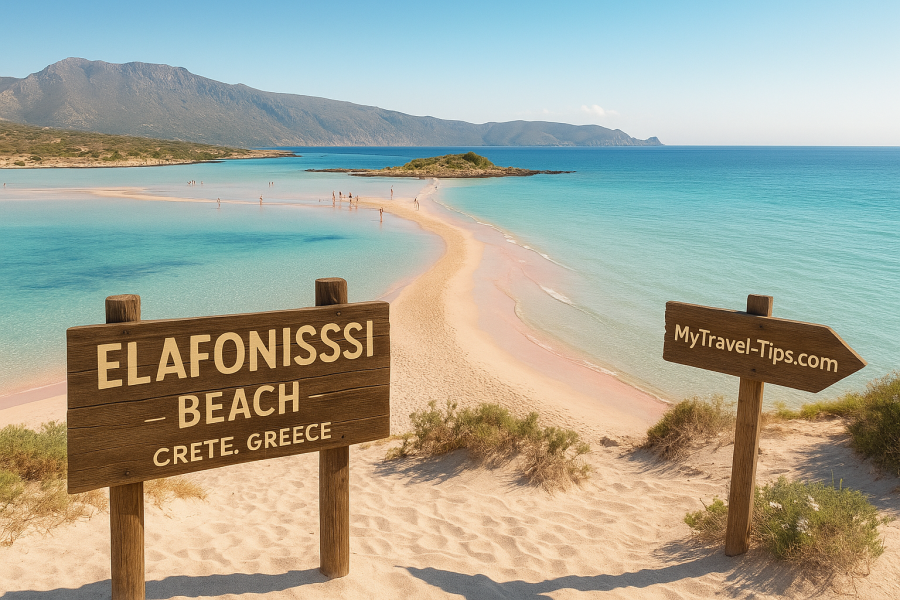
Southwestern Crete, near Chania, Greece
2-hour drive from Chania or daily buses in high season
May–June or September for fewer crowds and warm weather
Pink-tinged sand, shallow lagoon, natural preserve
Elafonissi Beach looks like it was lifted from a dream and dropped on the southern edge of Crete. Its signature pink-tinged sand—colored by crushed seashells—and shallow turquoise waters form a striking landscape where you can wade through the sea to a nearby islet. It’s a protected Natura 2000 area, meaning development is limited and the surroundings remain pristine.
The lagoon-style layout makes Elafonissi ideal for families with children, while the windswept west side of the beach attracts kiteboarders and nature seekers. While amenities like umbrellas and snacks are available in peak season, much of the charm lies in wandering across the sandbars and exploring tiny coves along the islet. It's especially photogenic at sunrise or sunset, when the light plays off the pastel sands.
- Ideal For: Families, photographers, relaxing waders, eco-travelers
- Recommended Gear: Reef-safe sunscreen, sandals, sun hat, waterproof bag
- Nearby Highlights: Kedrodasos Beach, Chrysoskalitissa Monastery, Chania Old Town
- Local Tip: Visit early morning or late afternoon to enjoy the colors without the crowds
🌺 Key Insight: Elafonissi is more than a beach—it's a natural work of art. Respect the protected dunes and bring all essentials, as facilities are limited off-season.
8. veti Stefan Beach, Montenegro
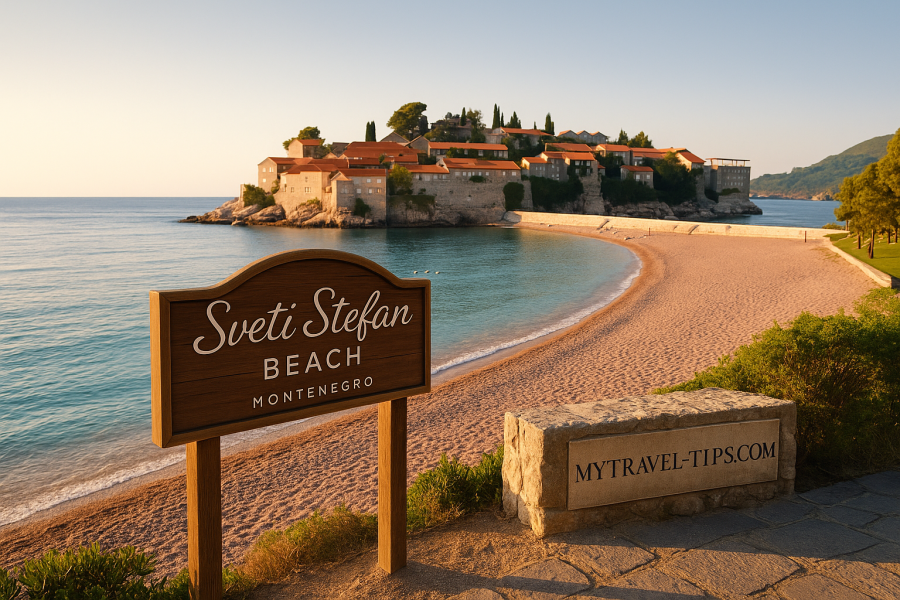
Budva Riviera, Montenegro
30-minute drive from Budva or 1 hour from Tivat Airport
June–early October for warm water and beach access
Pink pebbles, luxury amenities, historic island views
Sveti Stefan Beach is one of the most luxurious and photogenic beaches in Europe, located along Montenegro’s spectacular Budva Riviera. Divided into two halves by a narrow isthmus leading to the historic islet of Sveti Stefan, the beach is famed for its soft pinkish pebbles, calm azure waters, and views of the fortified 15th-century village turned private hotel. Even if you don’t stay on the island, the public side of the beach offers the same breathtaking scenery and Mediterranean charm.
The surrounding pine forests and olive groves add to the tranquil, high-end feel of the area. While one half of the beach is reserved for guests of the Aman resort, the other is open to the public with available sunbeds and services. From swimming in the calm waters to watching sunset paint the old stone villas gold, Sveti Stefan is a beach destination that blends beauty with elegance.
- Ideal For: Couples, honeymooners, upscale beachgoers, photographers
- Recommended Gear: Flip-flops (for pebbles), sunhat, swimwear, camera
- Nearby Highlights: Budva Old Town, Miločer Park, Pržno fishing village
- Local Tip: Visit during golden hour for incredible lighting and smaller crowds
🏰 Key Insight: Sveti Stefan offers more than a swim—it’s a visual journey into Adriatic heritage and luxury. Even from the public beach, the view is postcard-perfect.
9. Skagen Beach, Denmark
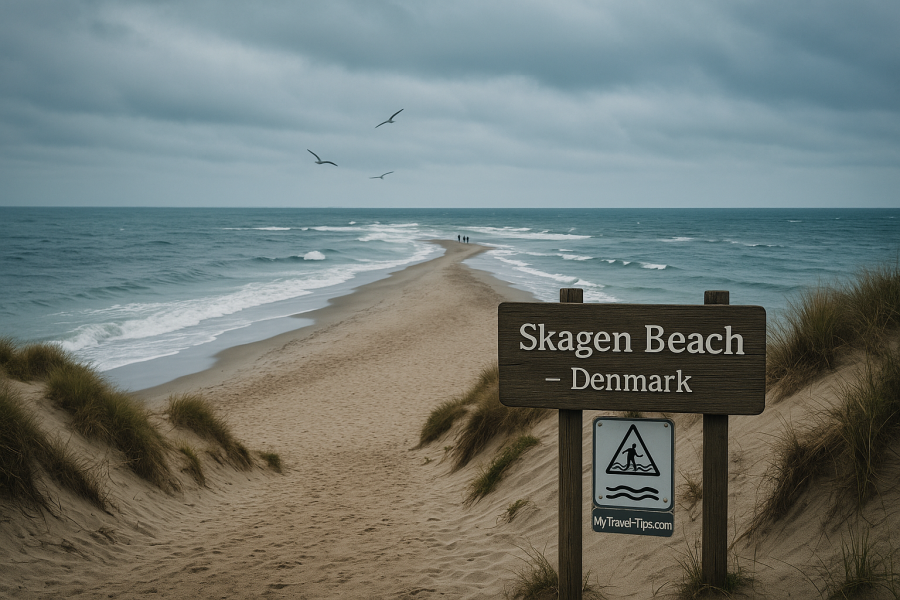
Grenen, Skagen, North Jutland, Denmark
10-minute drive or bike ride from Skagen town
May–August for the midnight sun and calm conditions
Sandbar where two seas meet, windswept and scenic
At the very tip of Denmark, Skagen Beach offers a rare natural spectacle—where the turbulent waters of the North Sea crash into the calmer Baltic Sea at a visible line. Known locally as Grenen, this sandbar is constantly shifting and expanding due to the forces of nature, and it's one of the only places in the world where you can physically stand with one foot in each sea.
While swimming is not allowed due to strong currents, walking to the meeting point of the seas is a surreal experience. The area is also rich in birdlife and dunes, making it a favorite among nature lovers and photographers. Reach it on foot or take the charming "Sandormen" tractor-bus from the nearby parking lot. After visiting, explore the nearby Skagen town, known for its yellow houses, seafood cafés, and Nordic art heritage.
- Ideal For: Nature photography, scenic walks, couples, birdwatchers
- Recommended Gear: Wind jacket, walking shoes, binoculars, camera
- Nearby Highlights: Skagen town, Råbjerg Mile dune, Skagen Museum
- Local Tip: Take the Sandormen tractor during windy days to avoid walking on soft sand
🌊 Key Insight: Skagen isn’t about sunbathing—it’s about witnessing the raw interaction of nature. Come for the seas, stay for the stark beauty of Denmark’s northern frontier.
10. Luskentyre Beach, Isle of Harris, Scotland
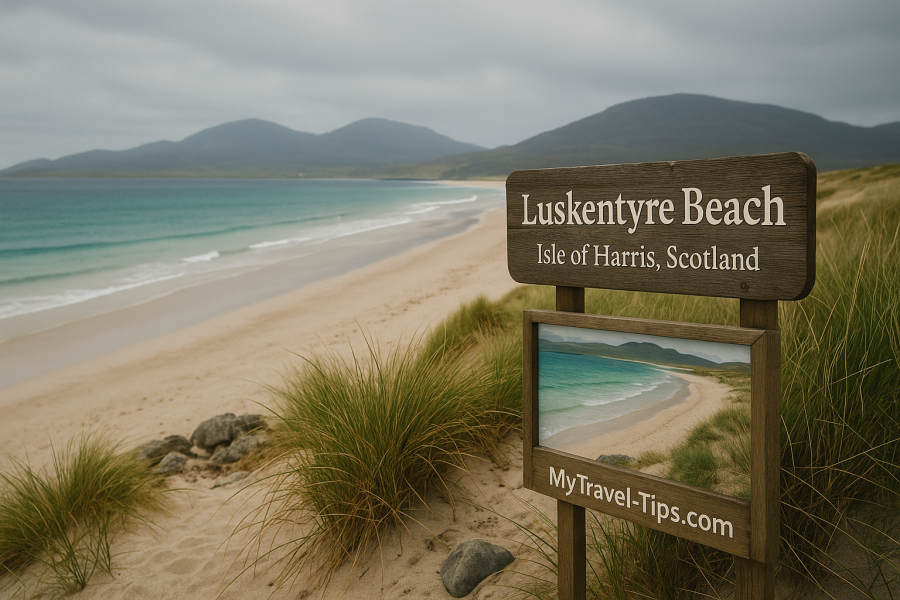
Isle of Harris, Outer Hebrides, Scotland
Reached via ferry from Skye or Ullapool, then by car
May–August for clearer skies and lighter winds
Expansive white sand, turquoise water, remote landscape
Luskentyre Beach is one of those places that leaves visitors in disbelief. Located on the Isle of Harris in Scotland’s Outer Hebrides, it boasts dazzling white sands and water so blue it’s often mistaken for the Caribbean. Set against a backdrop of distant mountains and untouched moorland, this beach offers solitude and serenity far from the crowds and noise of typical tourist hotspots.
While the water may be chilly, the reward is in the unspoiled views, wildlife sightings (like seals and eagles), and the feeling of being in a place truly untouched by time. There are no beach bars or shops—just you, the wind, and the sea. Bring your own supplies and embrace the raw, wild charm of the Scottish coast. Photographers and road-trippers will find Luskentyre to be the perfect final jewel in a European beach itinerary.
- Ideal For: Solitude, photography, wild landscapes, road trips
- Recommended Gear: Waterproof jacket, hiking boots, camera drone, picnic gear
- Nearby Highlights: Seilebost, Scarista Beach, Harris Distillery, North Harris Hills
- Local Tip: Check weather forecasts closely and pack layers—conditions change fast in the Hebrides
🌬️ Key Insight: Luskentyre is the definition of wild beauty—an untamed, windswept paradise where nature whispers louder than crowds ever could.
Final Summary
From sun-drenched Mediterranean shores to wild northern coastlines, Europe’s beaches offer something for every kind of traveler. Whether you're drawn to the pink sands of Crete, the volcanic drama of Iceland, or the tranquil beauty of Scotland’s outer isles, this list has curated the continent’s most breathtaking coastal escapes. These beaches are not just beautiful—they're unforgettable experiences waiting to happen.
Plan your trip around the vibe you’re seeking: serene lagoons, dramatic cliffs, local village charm, or adrenaline-fueled water sports. Wherever you choose to go, Europe’s most beautiful beaches prove that paradise isn't always on the other side of the world—it might just be a ferry or a short flight away.
🌍 Travel Tip: Pair your beach holiday with scenic drives, coastal hikes, or nearby historical towns using our curated guides on European travel and nature escapes.


